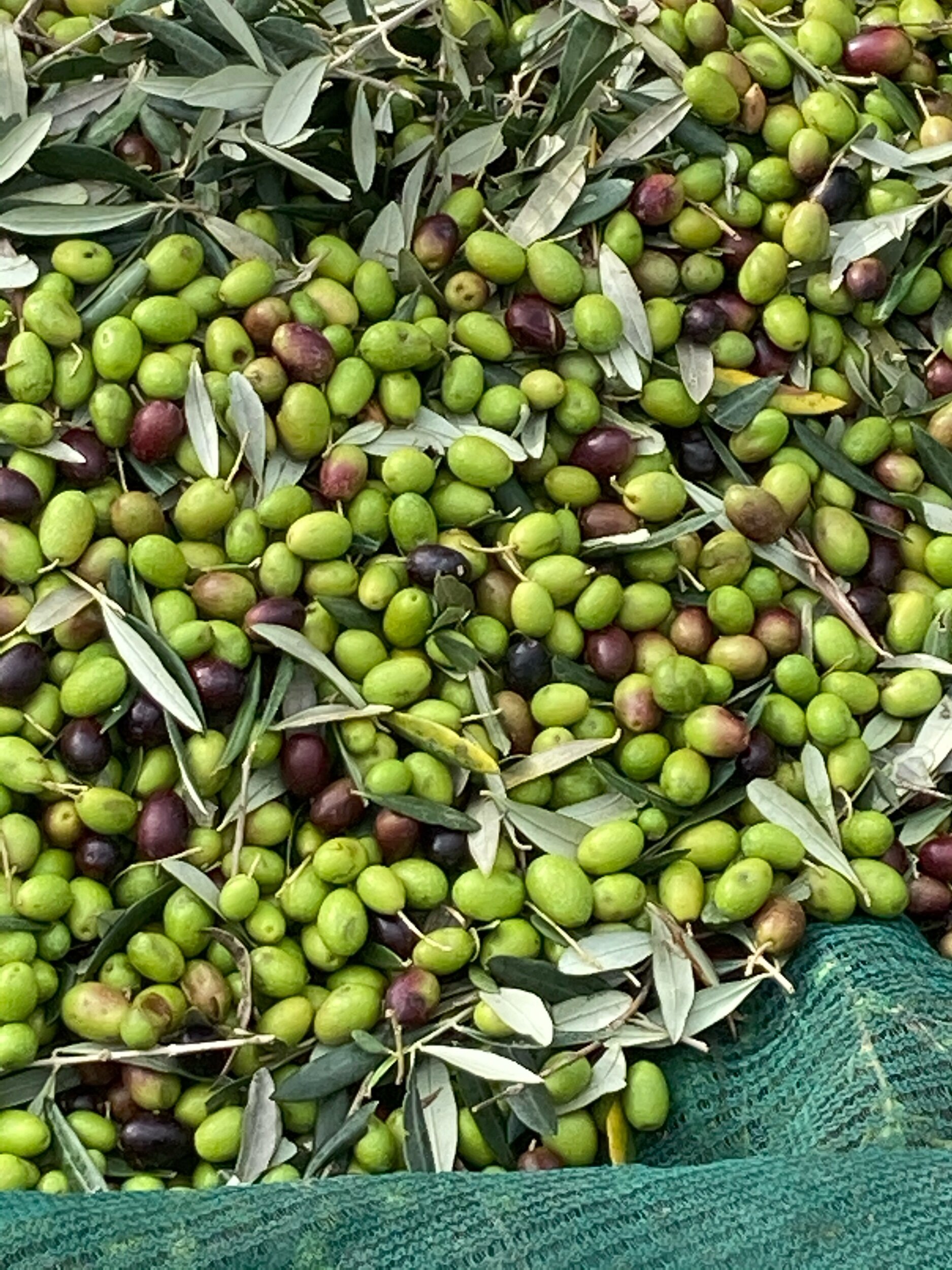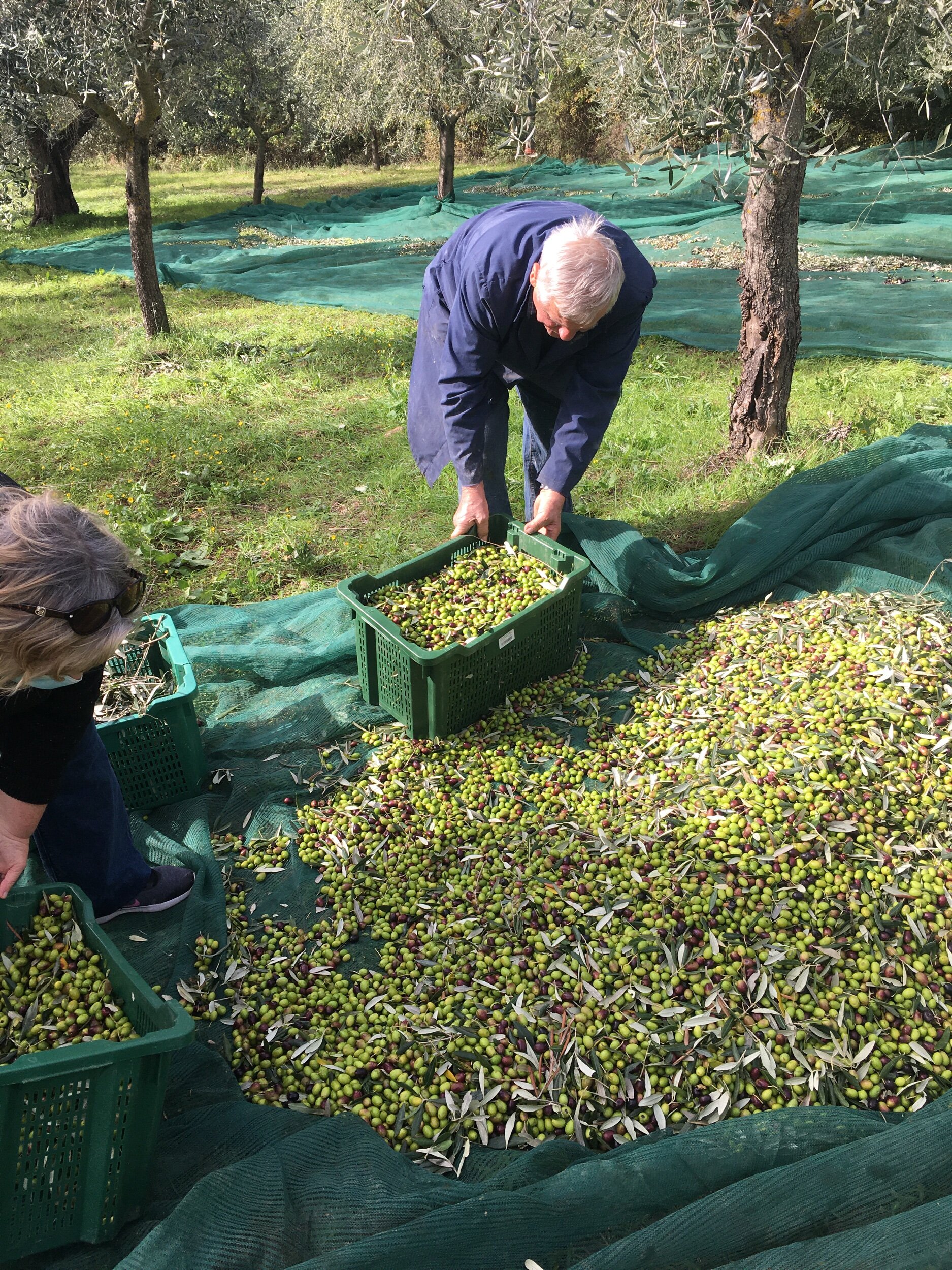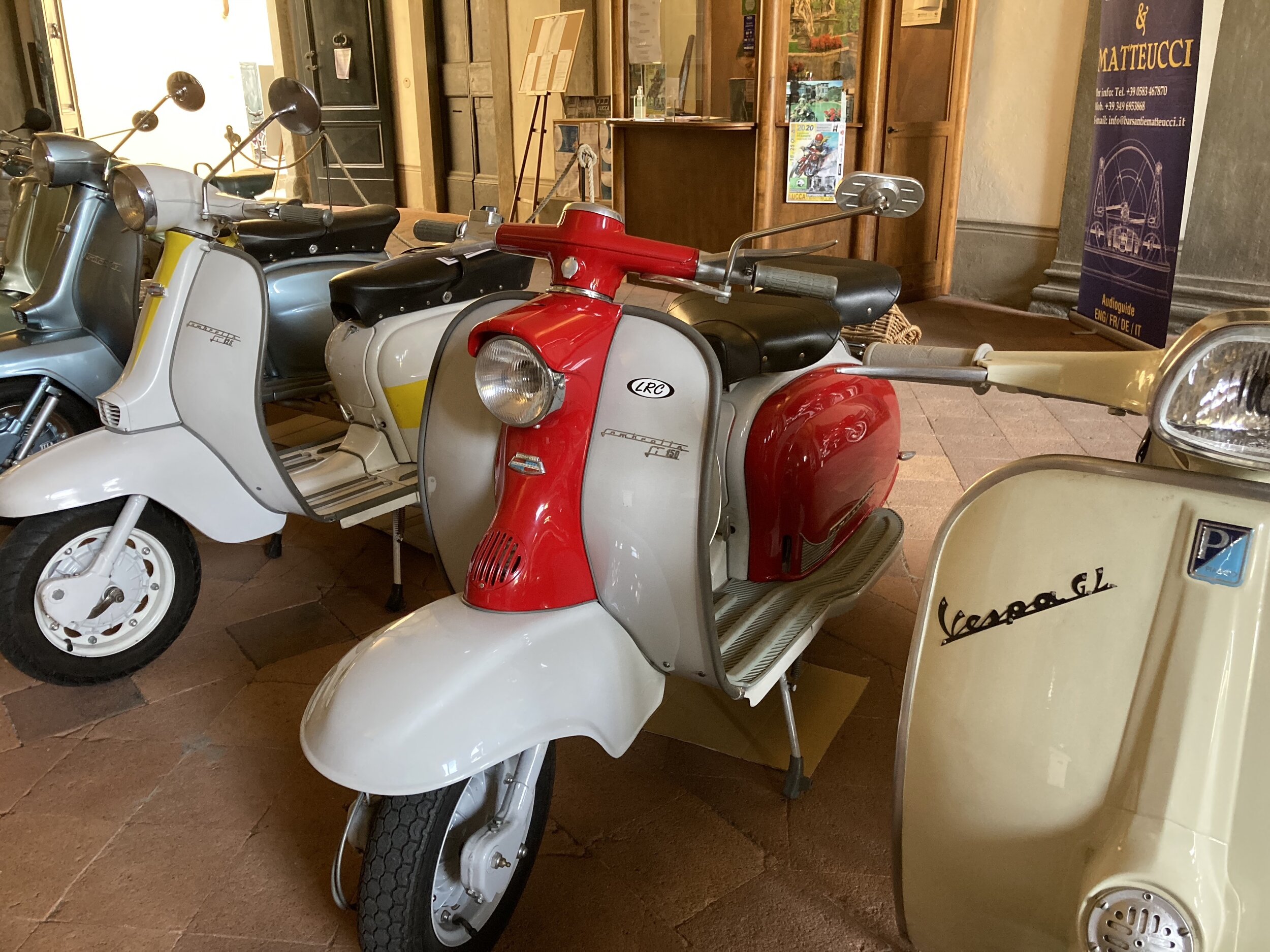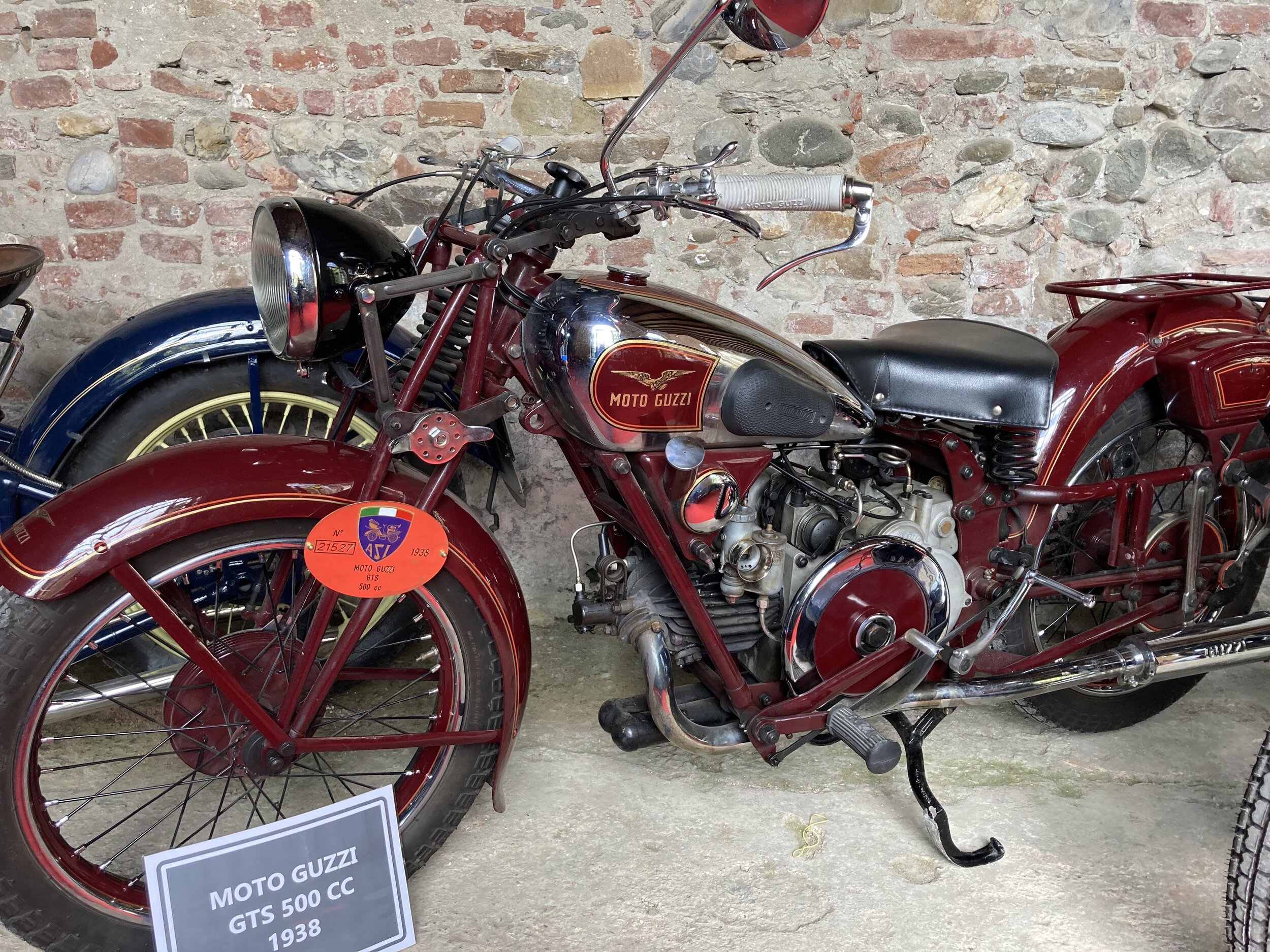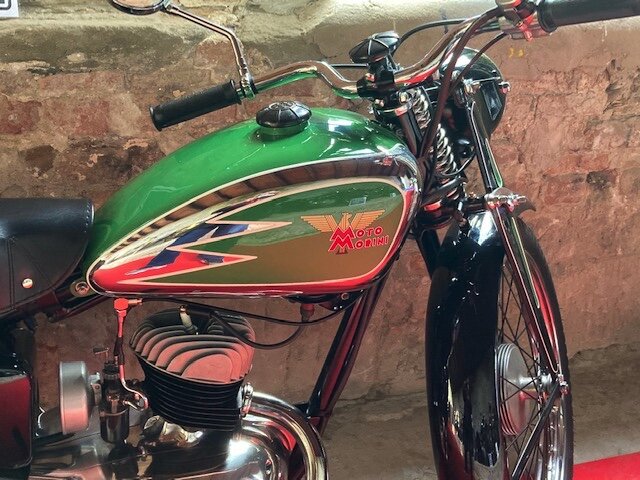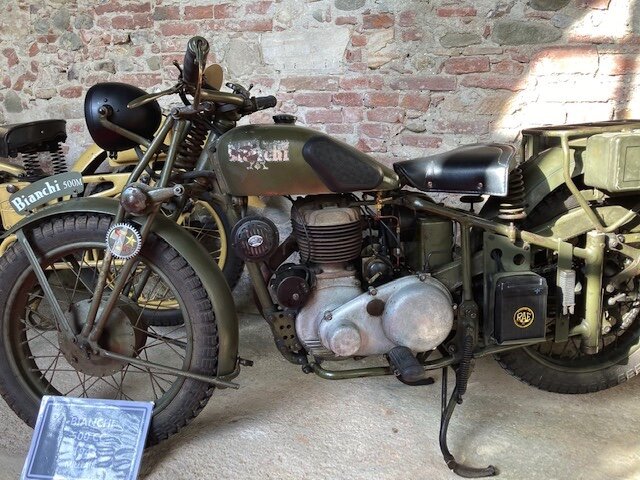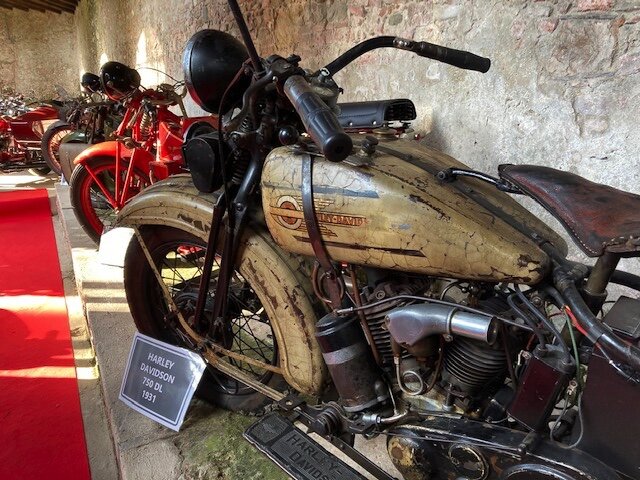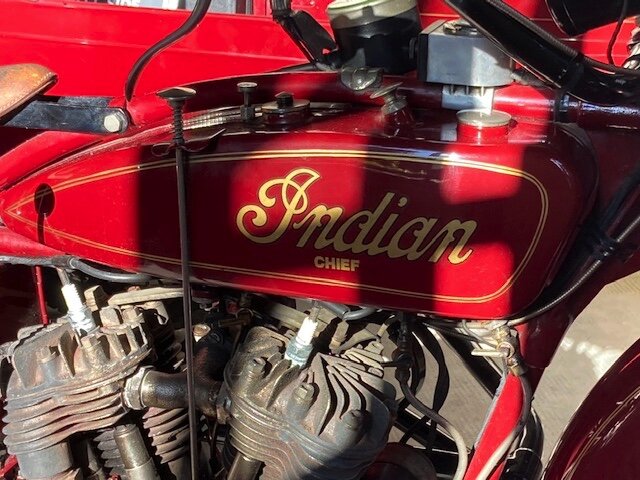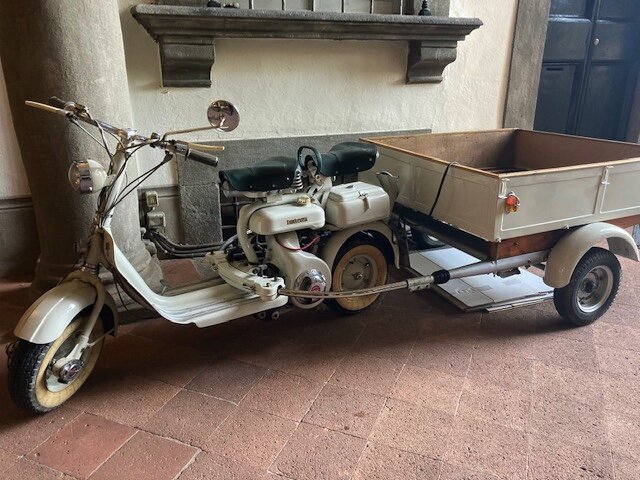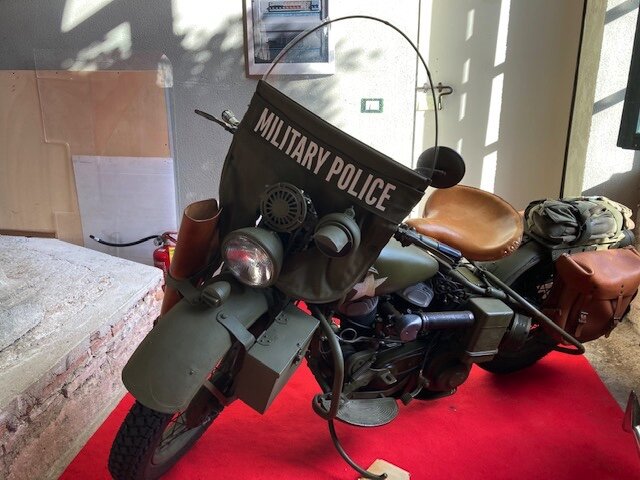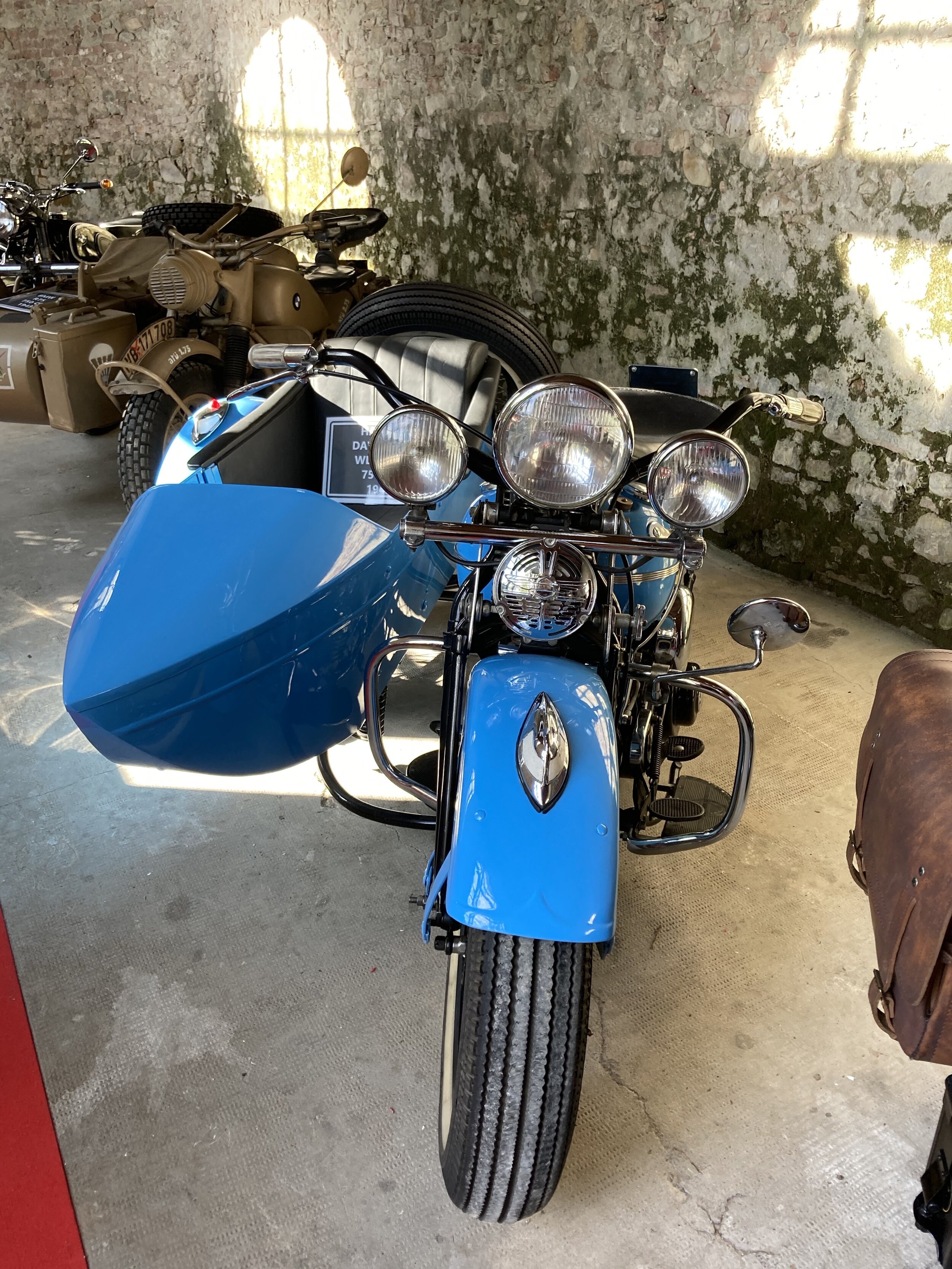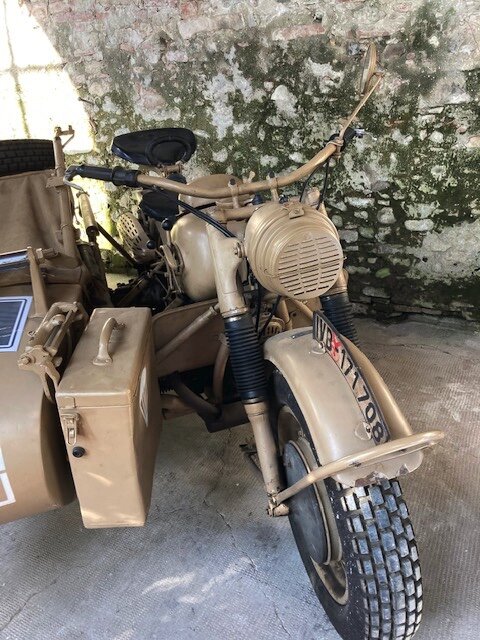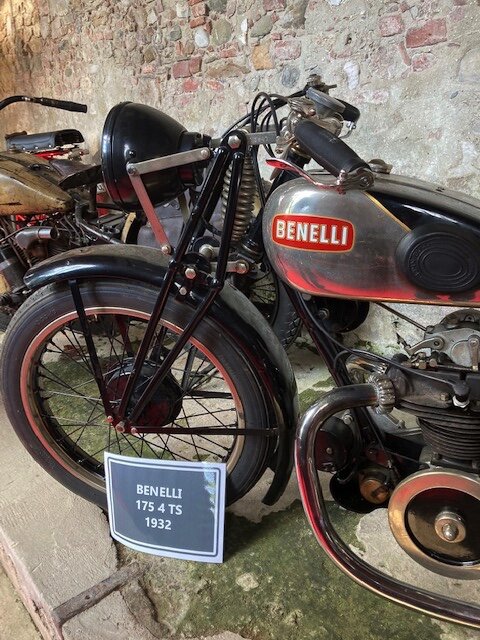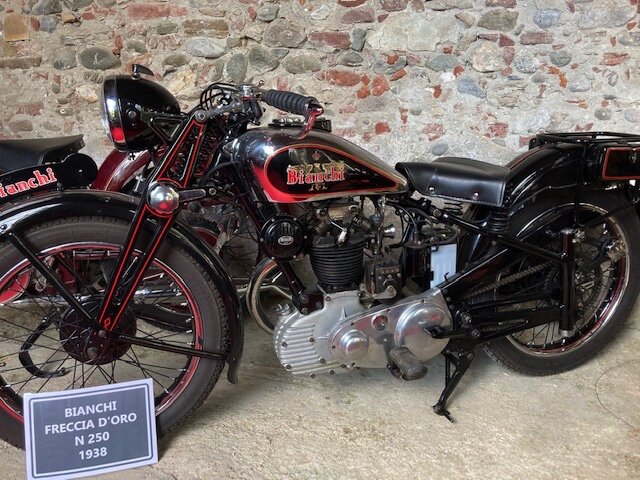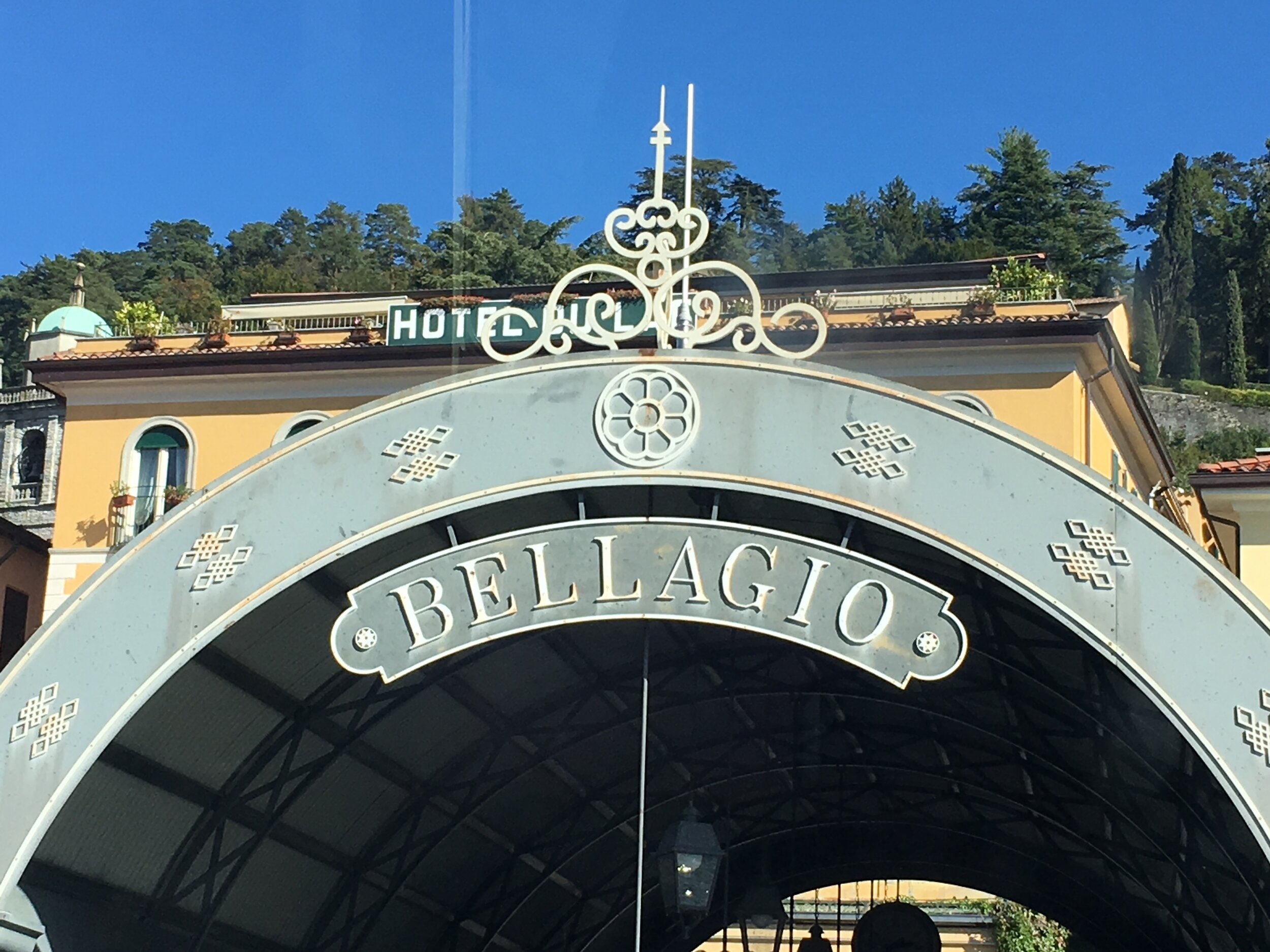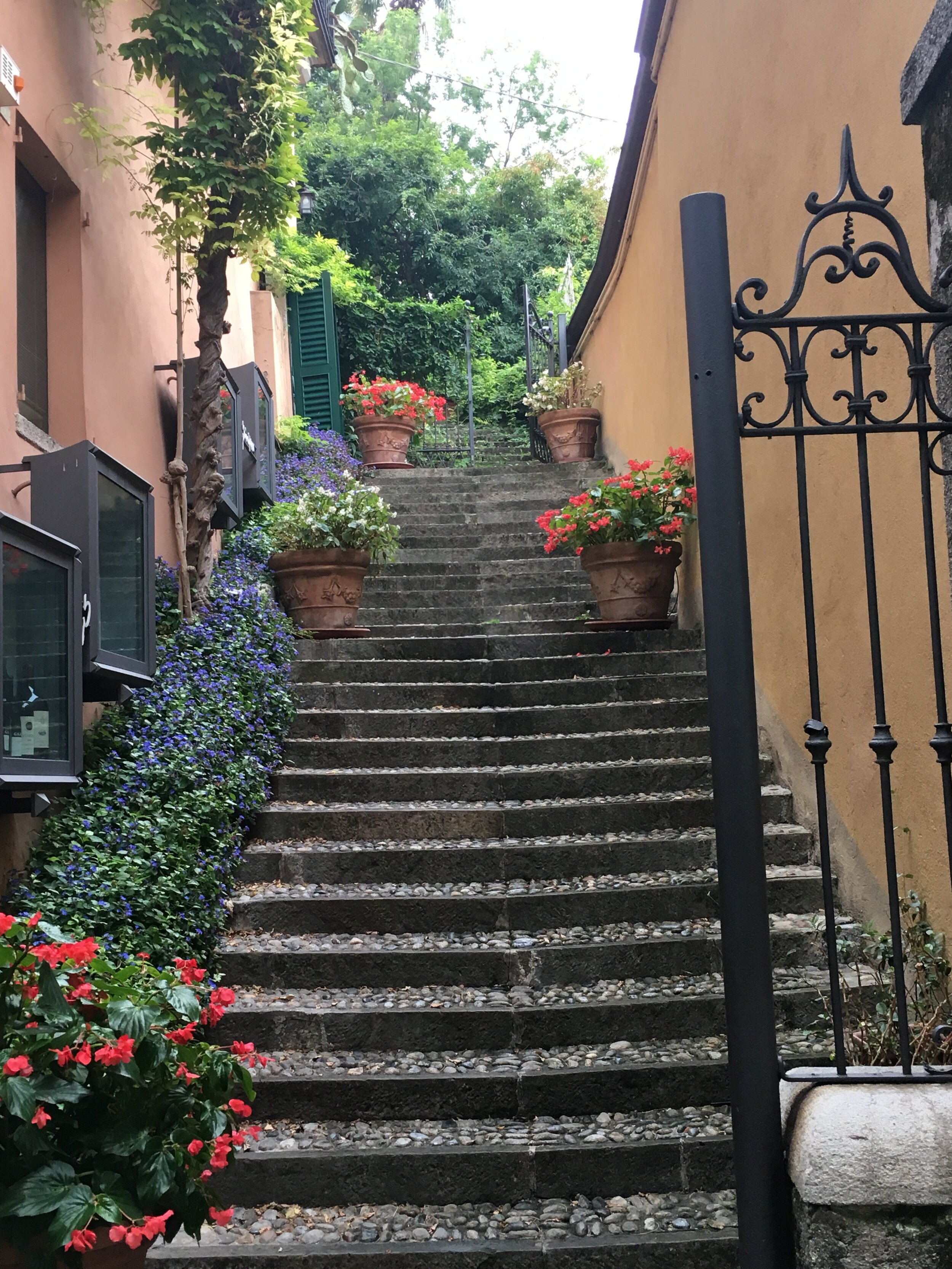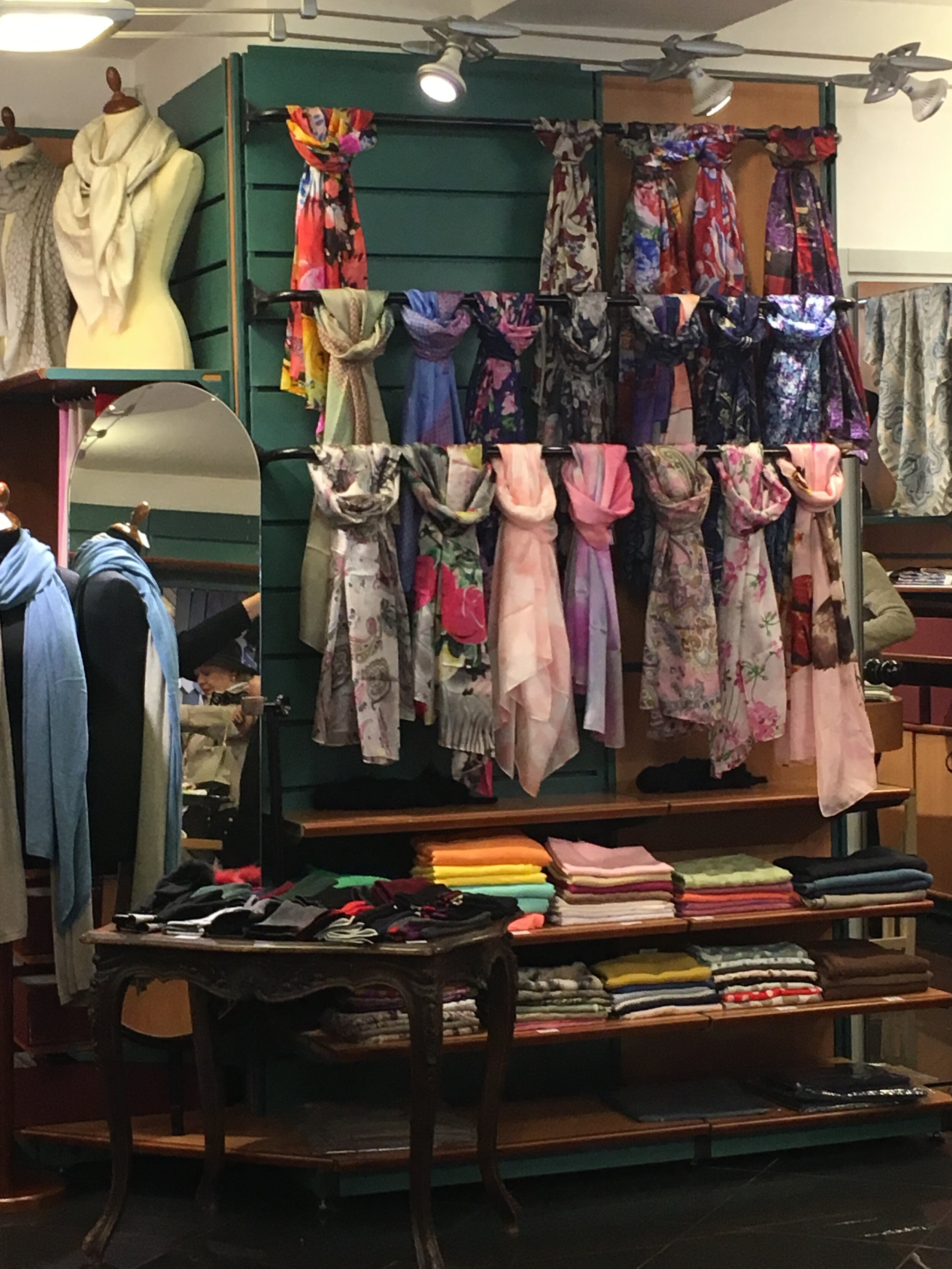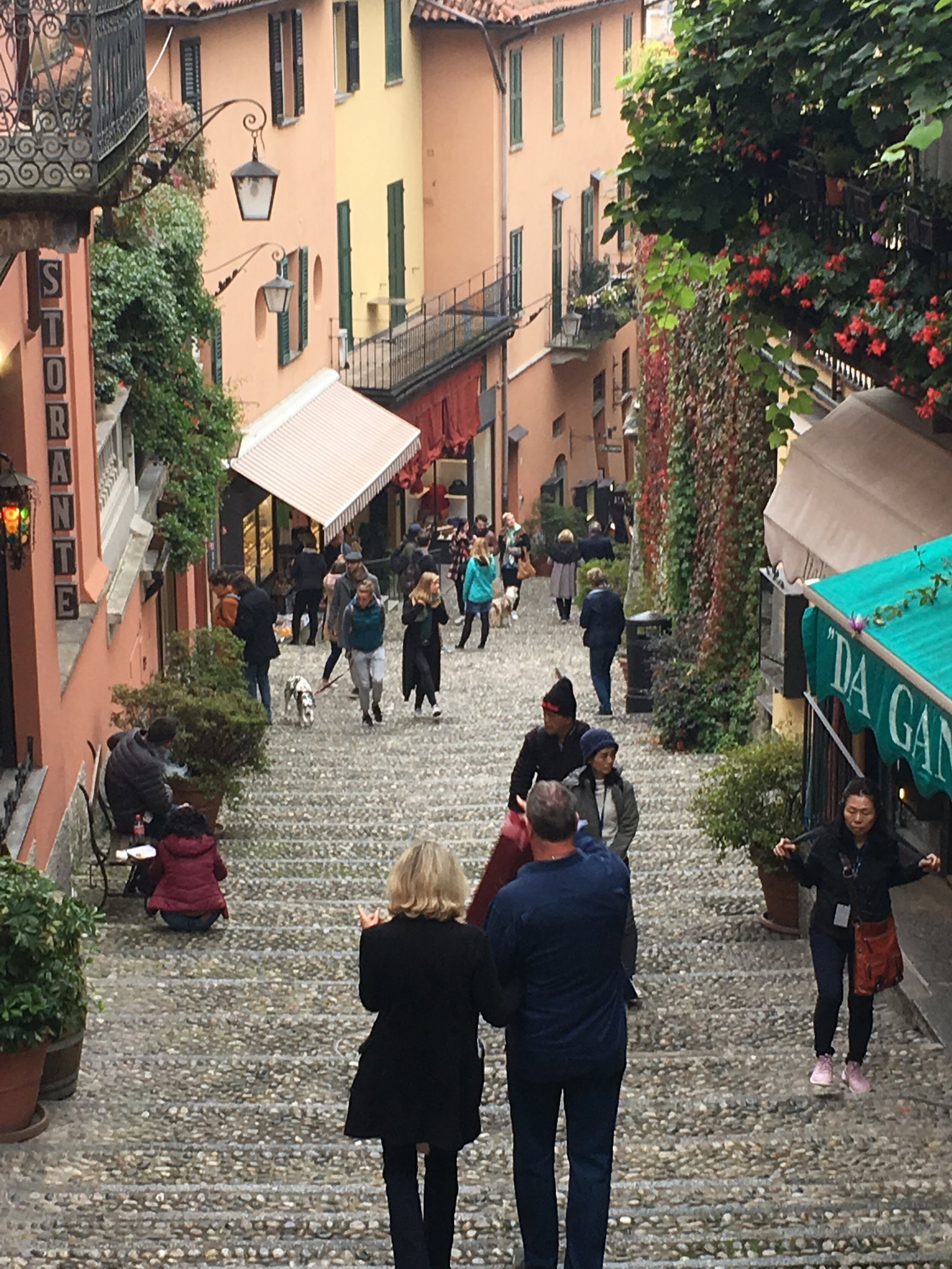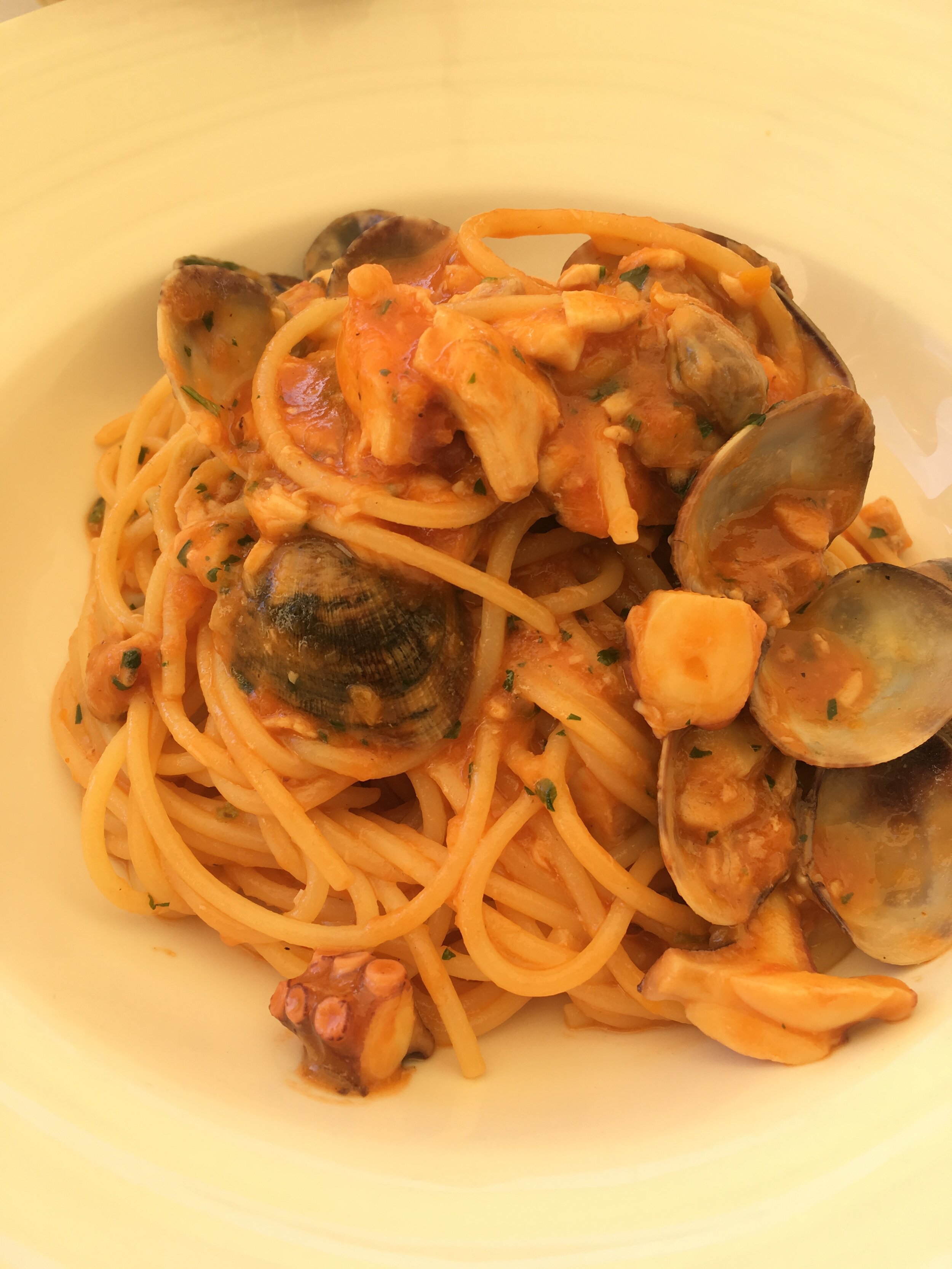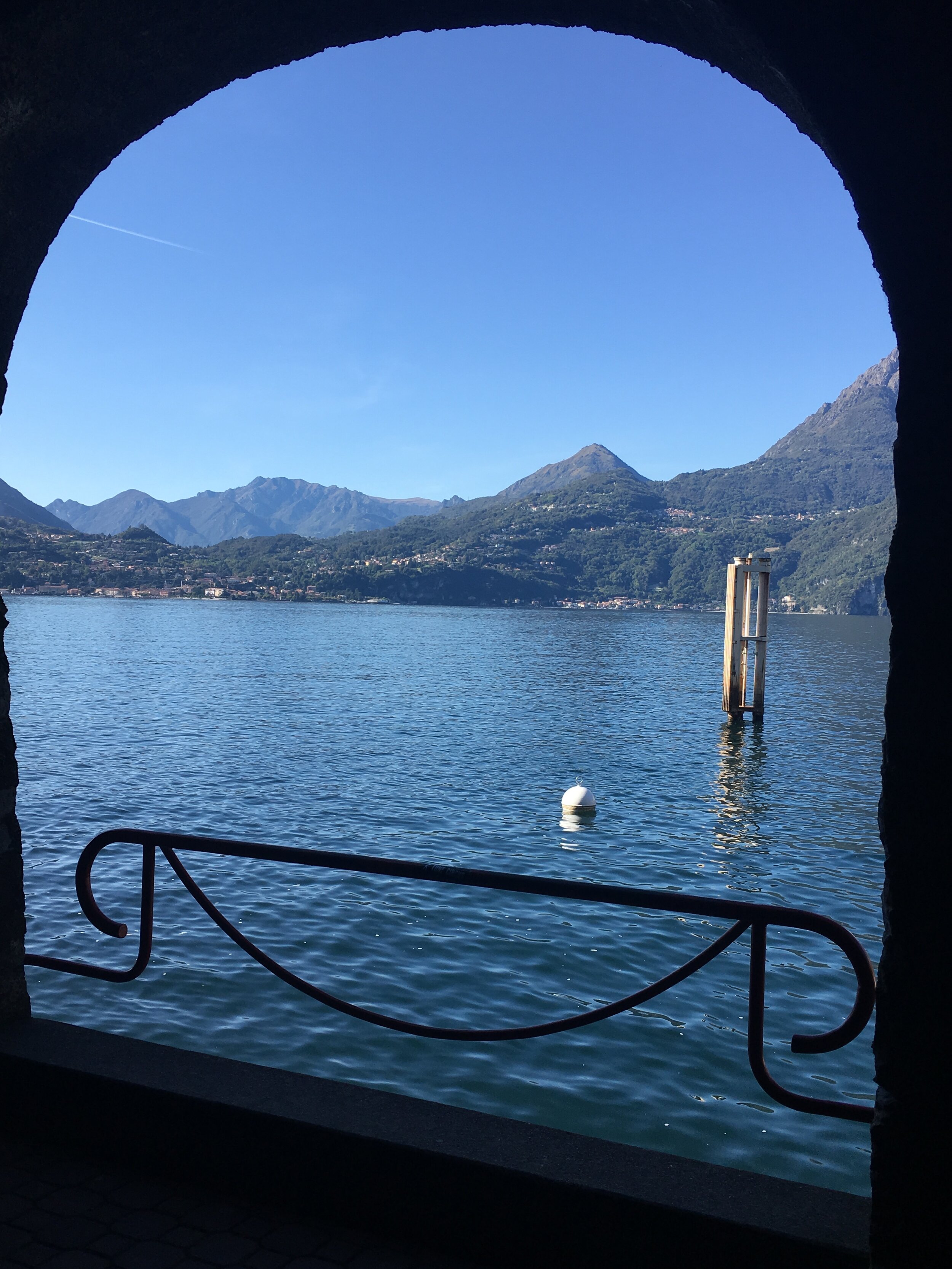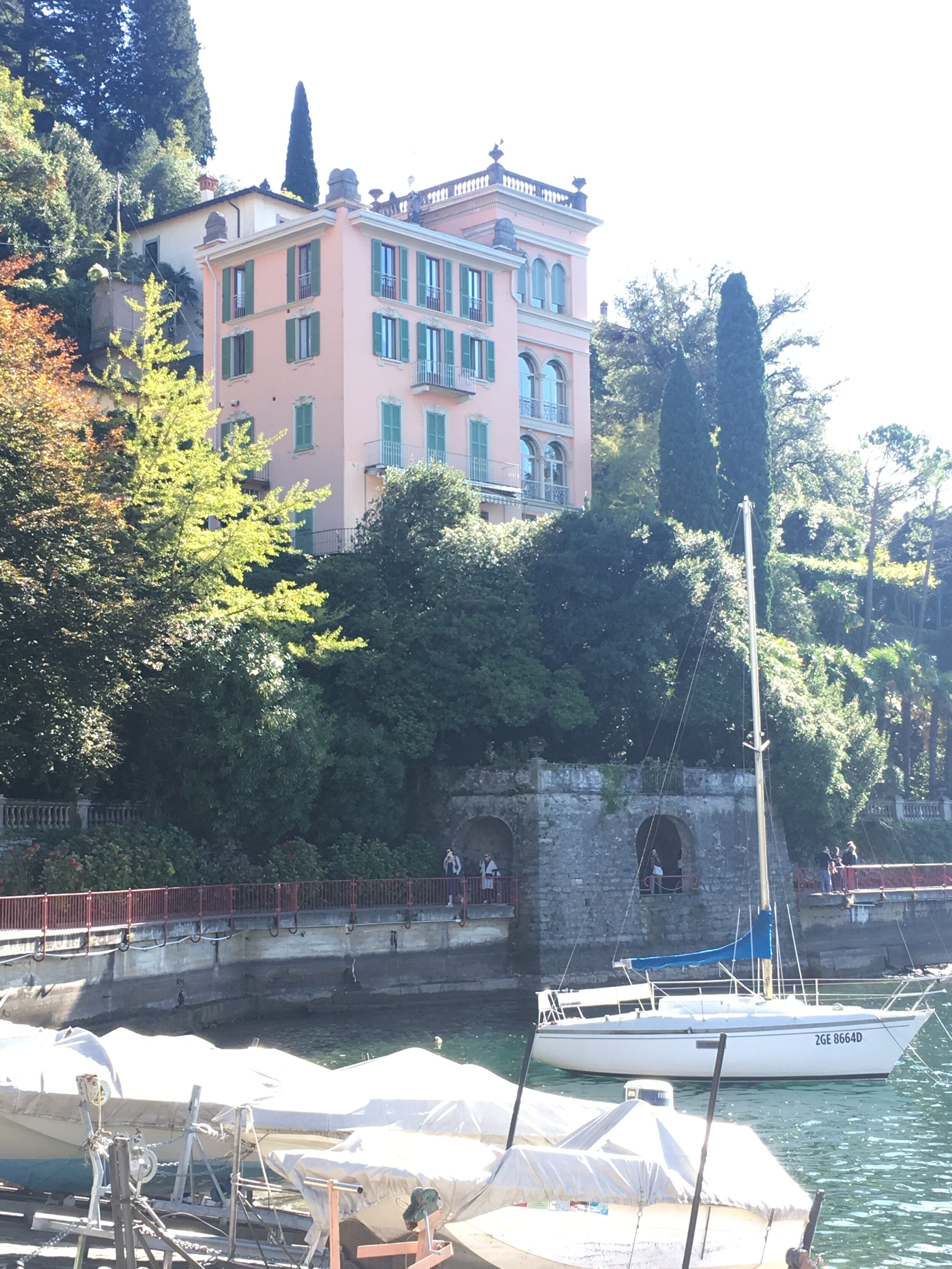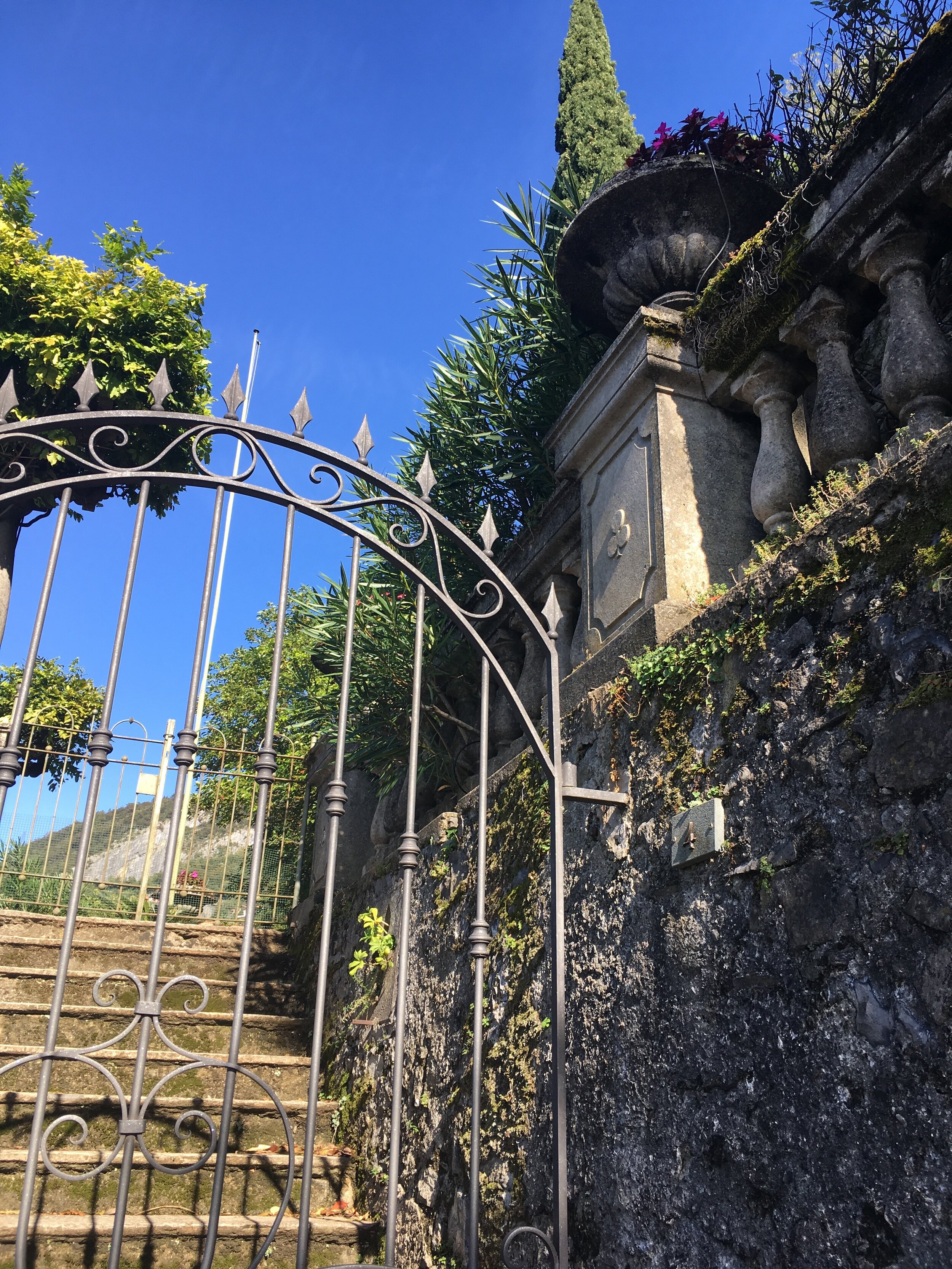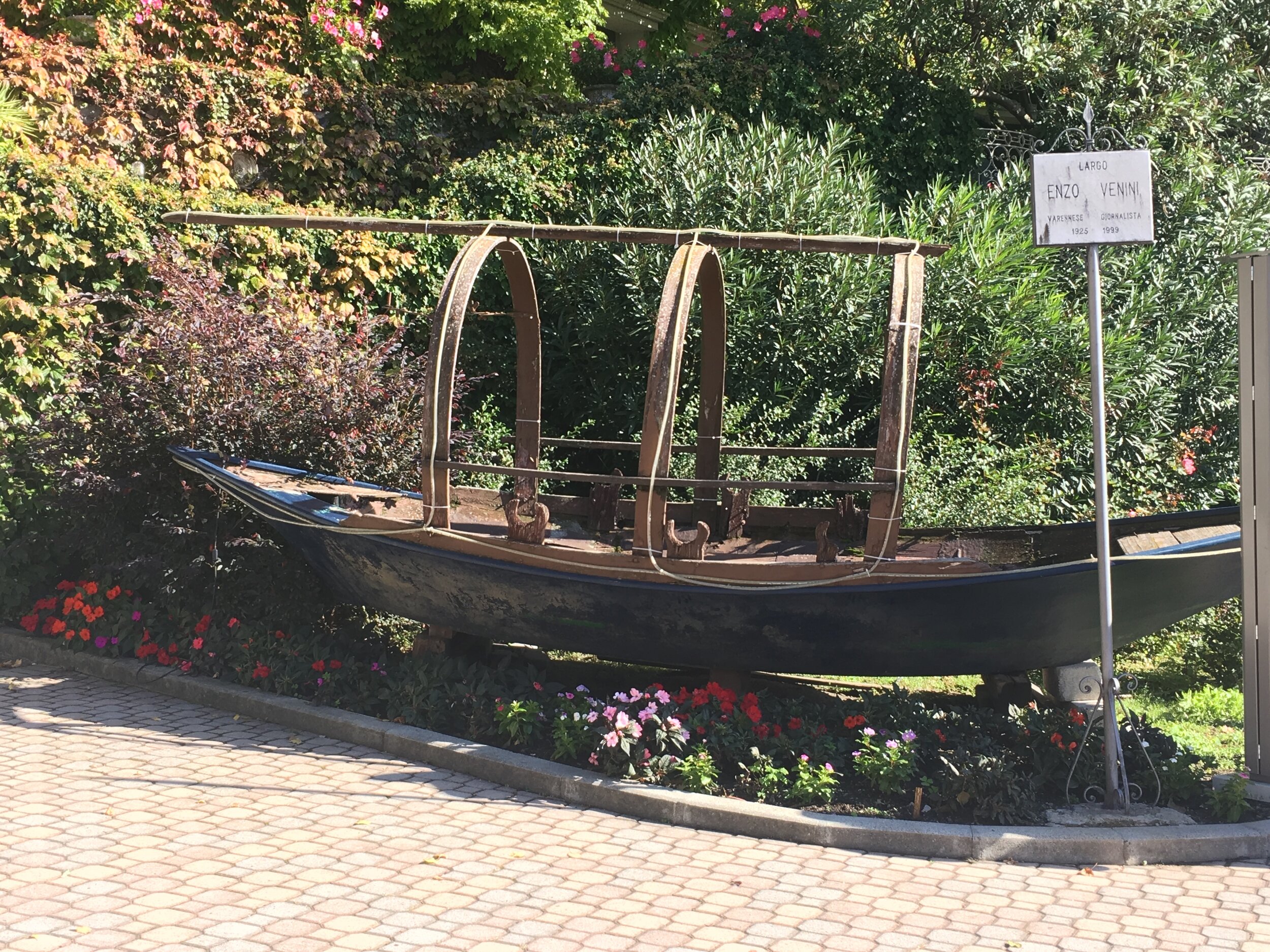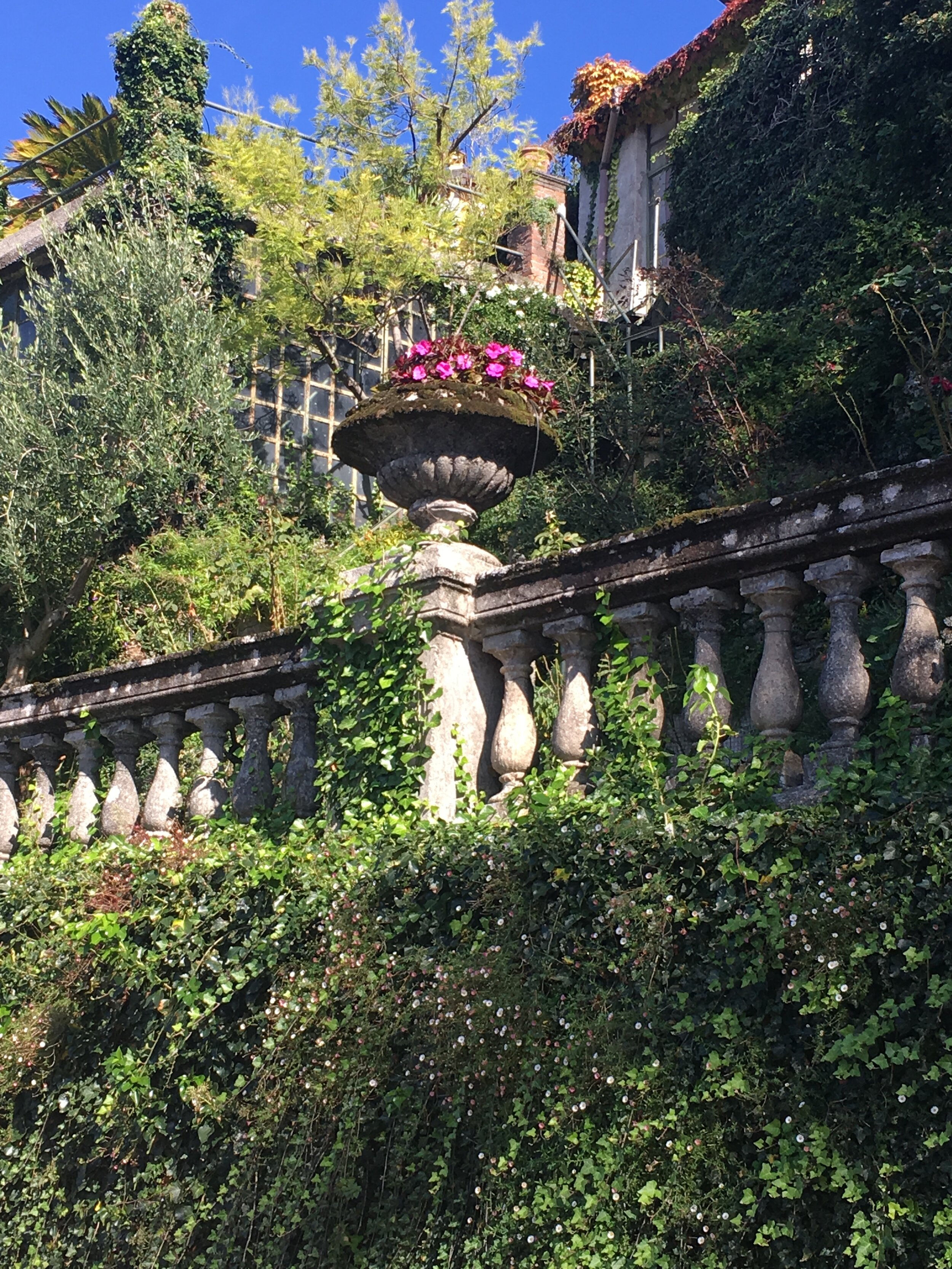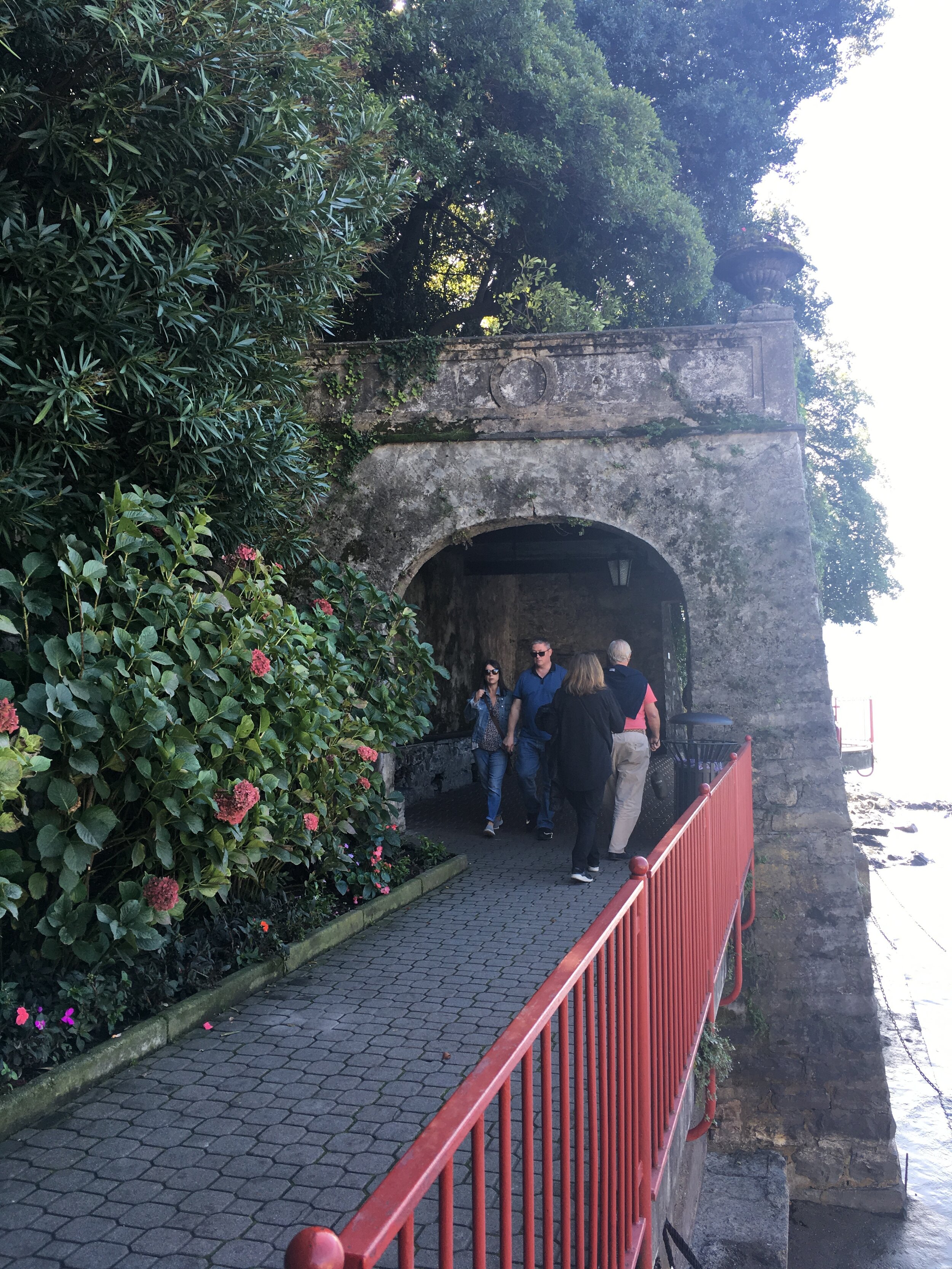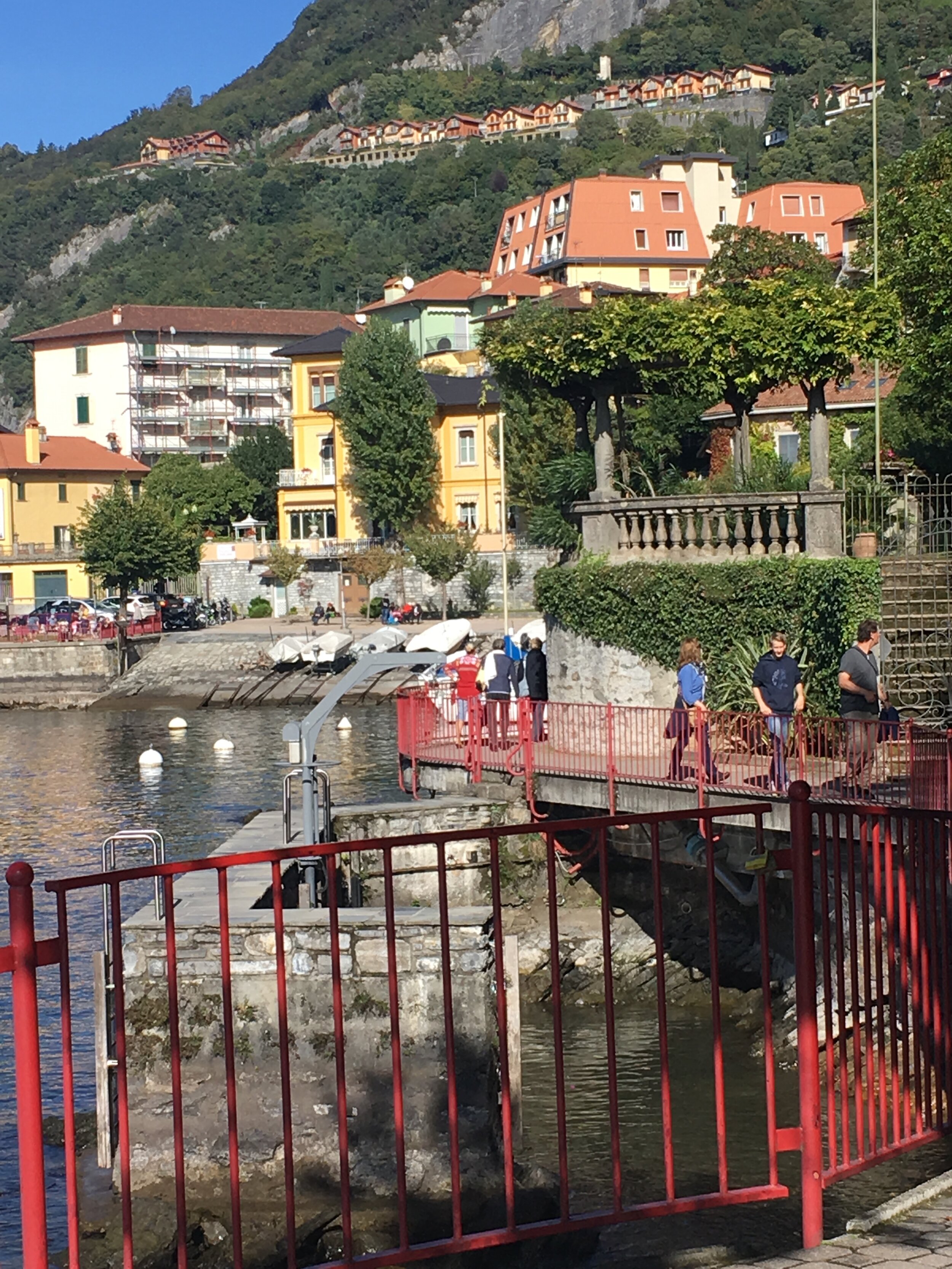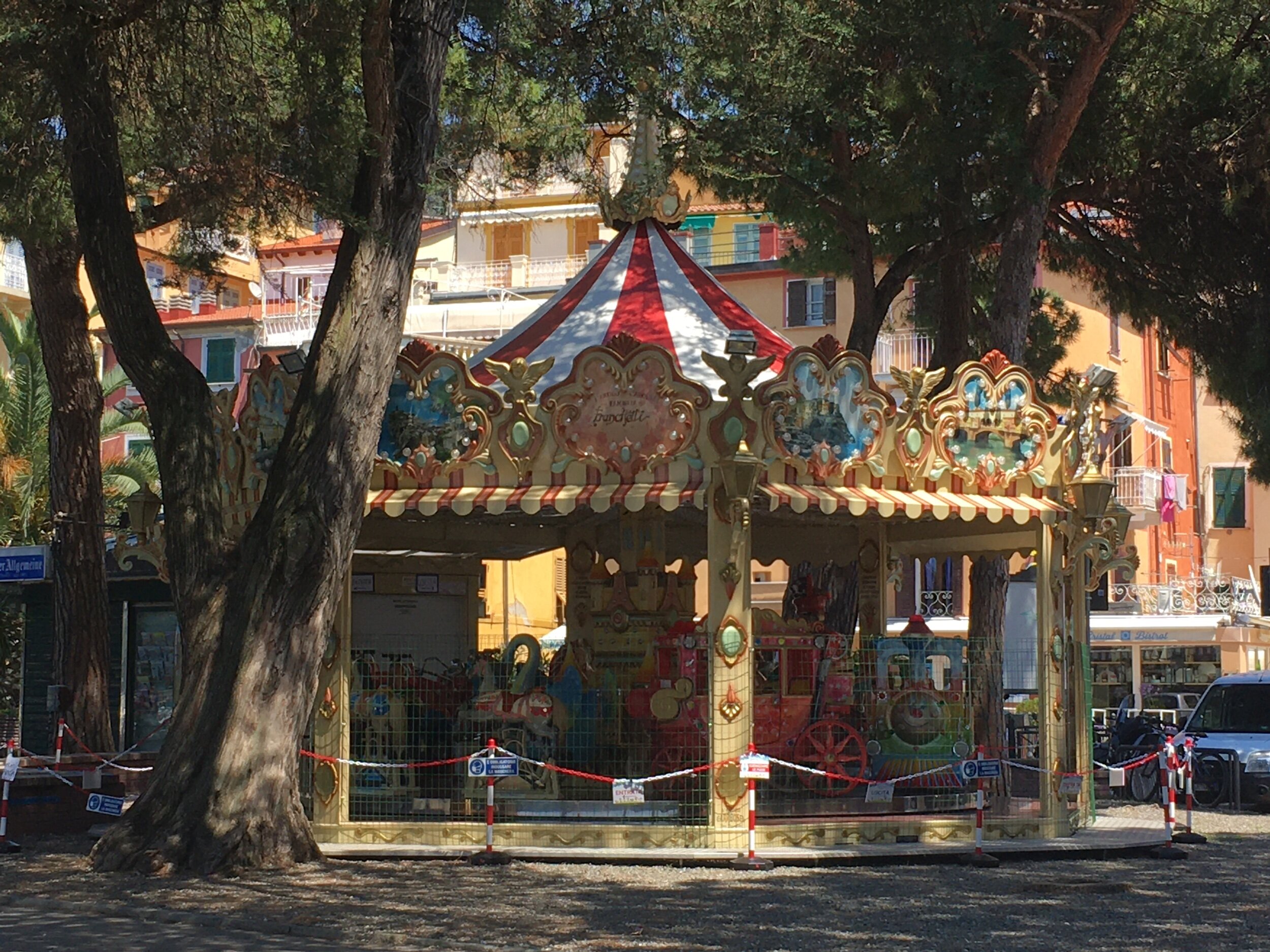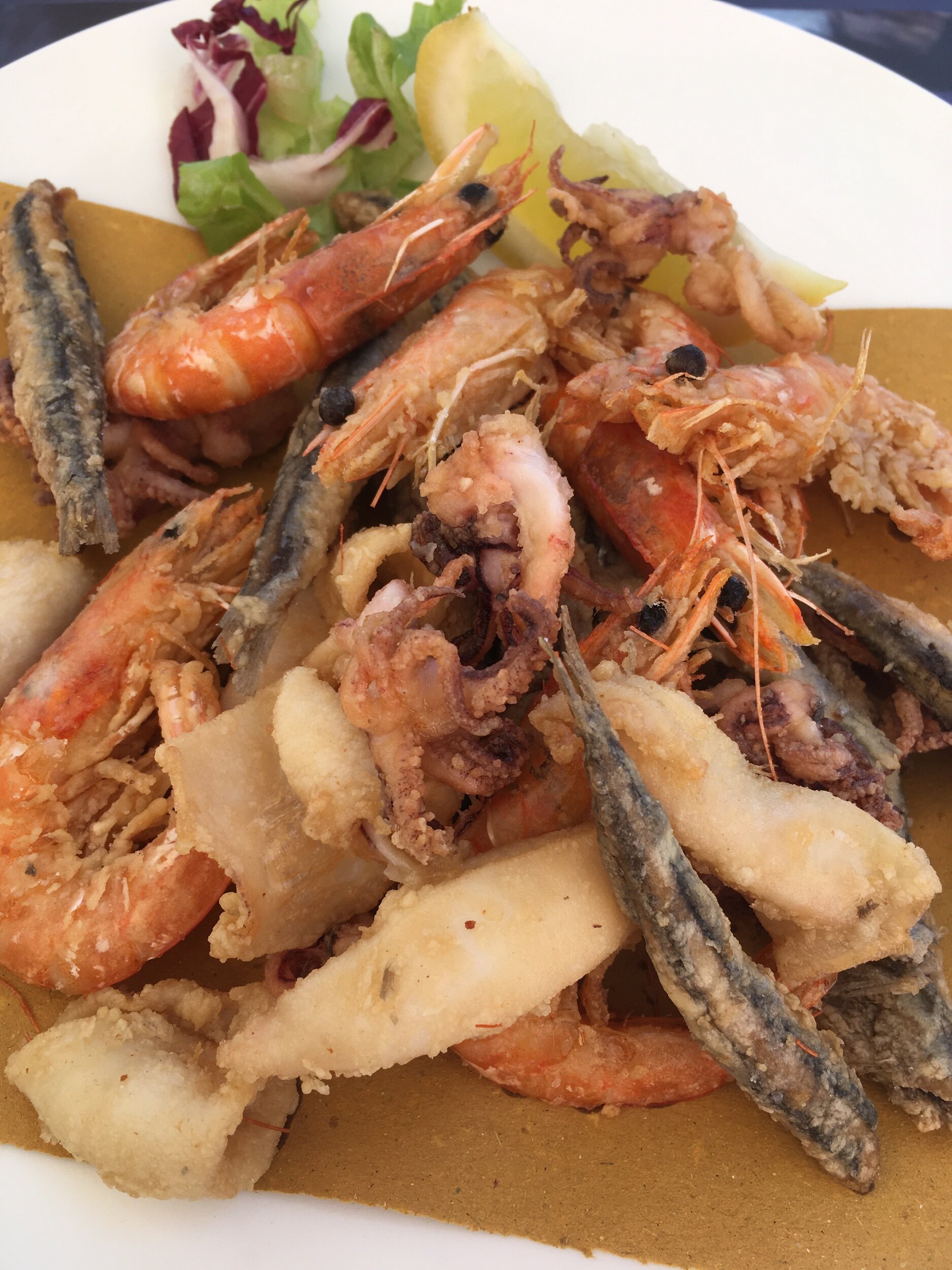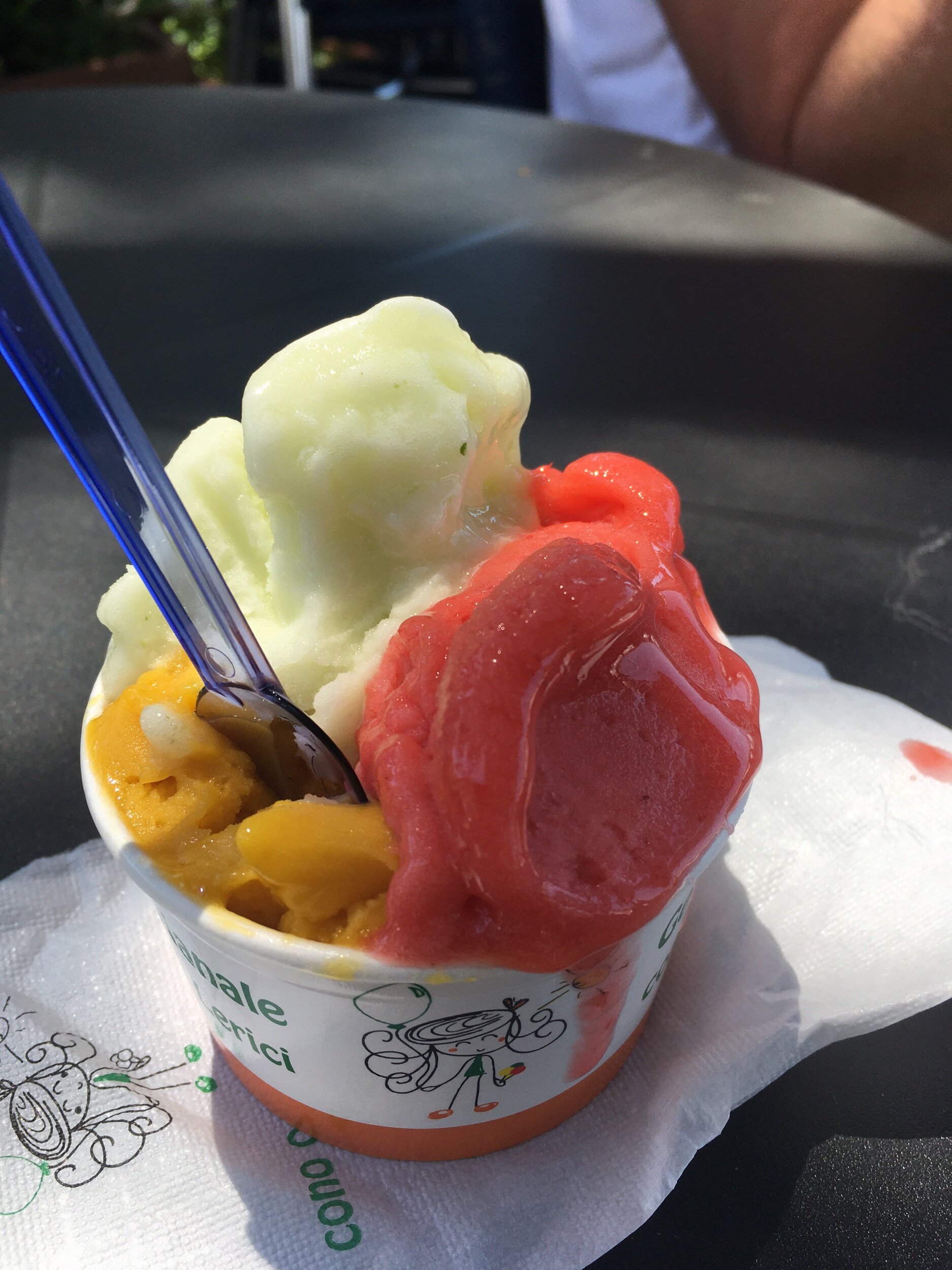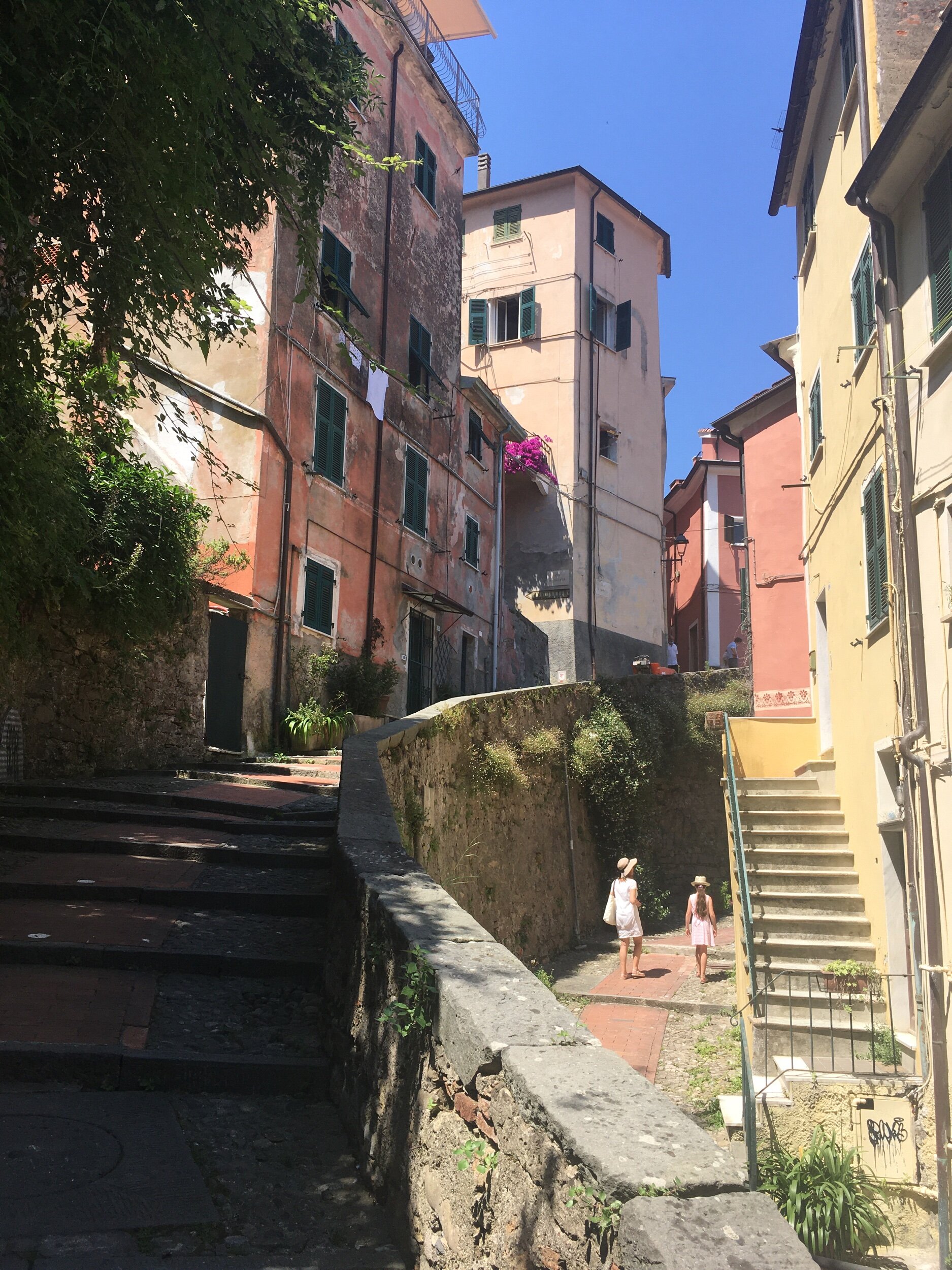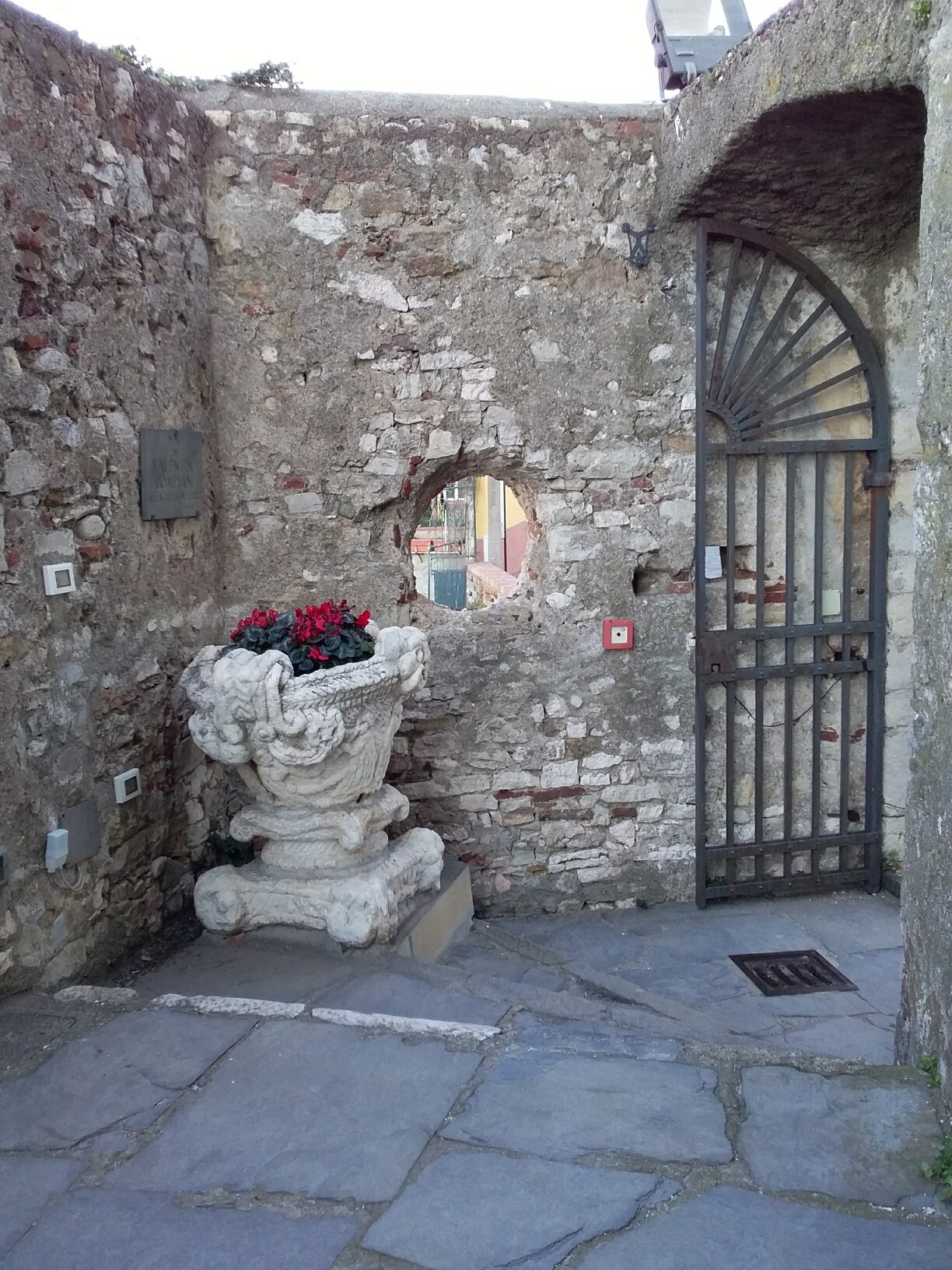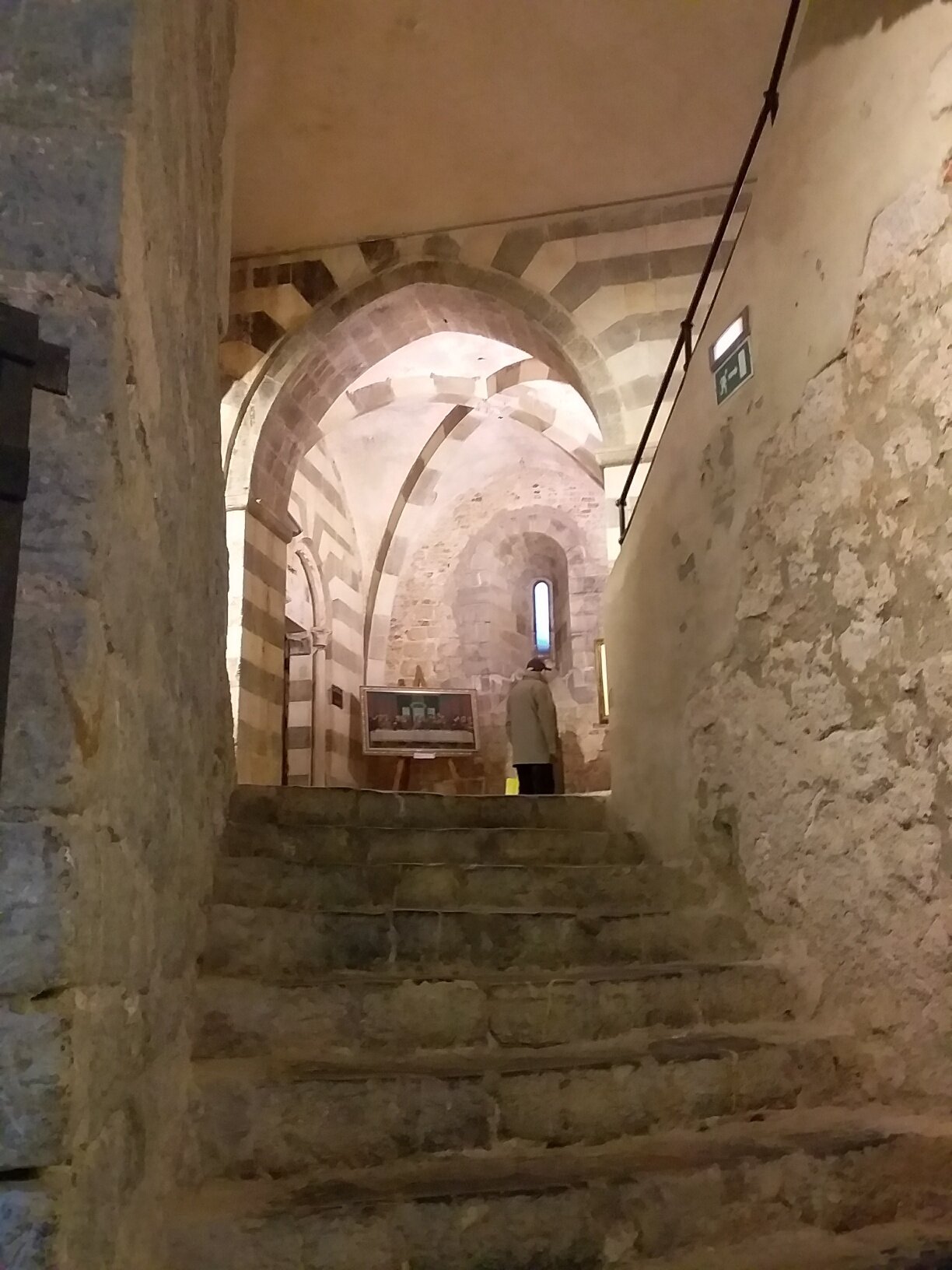The Olive Harvest in Tuscany
Late October into early November is olive season in Tuscany. Throughout the countryside, fields are dotted with olives trees, some in neatly trimmed rows and others standing alone, gnarled and ancient looking. They shimmer with green, purple, and nearly black fruit and the promise that they will soon yield the spicy, flavorful, wonderfully scented liquid that makes Italian olive oil so prized.
I recently had the opportunity to experience the harvest at one of my favorite places - the Agriturismo Cretaiole near Pienza, Italy. Cretaiole is a working fattoria (farm) with many olive trees. It is run by the Moricciani family who also operate a family farm (Podere San Gregorio) and large olive groves, all just beyond the city walls in Pienza. In all, they have nearly 3000 olive trees. They produce a superb organic olive oil under the supervision of family patriarch Luciano and son Carlo (who is also a professional olive oil tester for the province of Siena). This makes Cretaiole the perfect place to get a close up view of the olive harvest and also provides the perfect excuse to spend a week in southern Tuscany.
My goal was to learn about the harvest and to take lots of photos. I quickly found that it was impossible to just watch! Pitching in is part of the fun and doing so provided the chance to speak with Luciano, who has been harvesting the olives in this area since he was a child in the years after World War II.
Luciano Moricciani has spent a lifetime cultivating and harvesting olives. His Cretaiole olive oil is fantastic!
The first thing I learned is that olive harvesting is hard work! First the olives must be picked from the tall, dense trees. This can be done by hand, climbing up a ladder to reach high into the trees and dropping the olives into a basket. Luciano recounted the dangers of this - including the many falls and broken bones which were common in his youth. These days it is more common, especially in the larger groves, to use a power tool - a sort of vibrating rake - to shake the olives from the tree. The olives then fall into nets that have been spread out on the ground around the trees. This is the process used at Cretaiole, with 2 men performing this job over the course of a week or more (they have a lot of olive trees!).
Shaking the olives from the trees and into the collecting nets
As the colorful olives pile up in the nets, the many twigs that also fall from the trees must be separated from the olives by hand. The olives are then scooped into containers and, within a day, they are taken to the frantoio (olive press) where they will be separated from their leaves, washed, ground, and coaxed into giving up their precious oil.
Separating the twigs from the olives
A few days after taking the above photos, I was able to visit with Luciano and his wife Liliana at their farm, Podere San Gregorio in Pienza. In the farm’s cantina, the newly pressed oil is stored in large vats and the oil is put into bottles and tins for sale under the Cretaiole labe
Together we tasted the new oil on slices of bread alongside some of the other products from the farm (delicious prosciutto and salami), a local pecorino cheese, and glasses of red wine produced from Cretaiole’s vines. The new oil was a beautiful green color, fragrant, and very, very tasty.
This was a wonderful opportunity to talk to the Moricciani’s about their lives, their land, the business of the agriturismo, and the area around Pienza.
It is always a treat to be able to buy a new season olive oil straight from the farm, but it is even better when you’ve had the chance to participate in the harvest, although truth be told I did more watching and photographing than working. Still - I think there must be at least one or two of “my” olives in the big bottle of oil that I took home with me.
I will enjoy the bold flavor of Cretaiole olive oil drizzled atop a bowl of minestrone or over toasted bread throughout the coming winter. If you’d like to taste this wonderful organic extra virgin olive oil, Cretaiole ships 1 and 5 liter cans.
A huge thanks to Luciano, Liliana, and Carlo Moricciani for inviting me to learn about the olive harvest and for being such warm and generous hosts.
Contact information for Cretaiole website: cretaiole.it email: info@cretaiole.it

